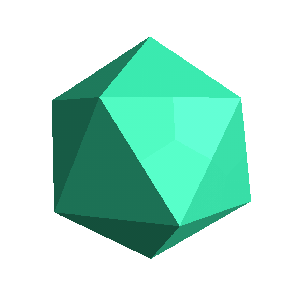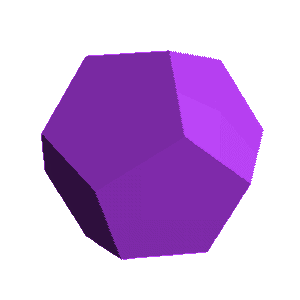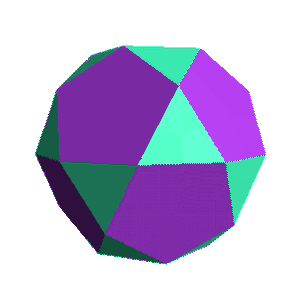
20 triangular faces
12 vertices

12 pentagonal faces
20 vertices

20 triangular faces
12 pentagonal faces

20 triangular faces 12 vertices |

12 pentagonal faces 20 vertices |

20 triangular faces 12 pentagonal faces |
|
If, when truncating the vertices of either the icosahedron or the dodecahedron, we move in exactly half way, the result is the icosidodecahedron. Thus, we can think of the icosidodecahedron as being the limiting case of either the truncated icosahedron or the truncated dodecahedron.
This happens because the icosahedron and dodecahedron are dual solids. Notice that the icosahedron has 20 faces and 12 vertices, while the dodecahedron has 12 faces and 20 vertices. Other Platonic solids which are duals are the cube and the octahedron--see the cuboctahedron page. The tetrahedron is self-dual; it has 4 vertices and 4 faces.